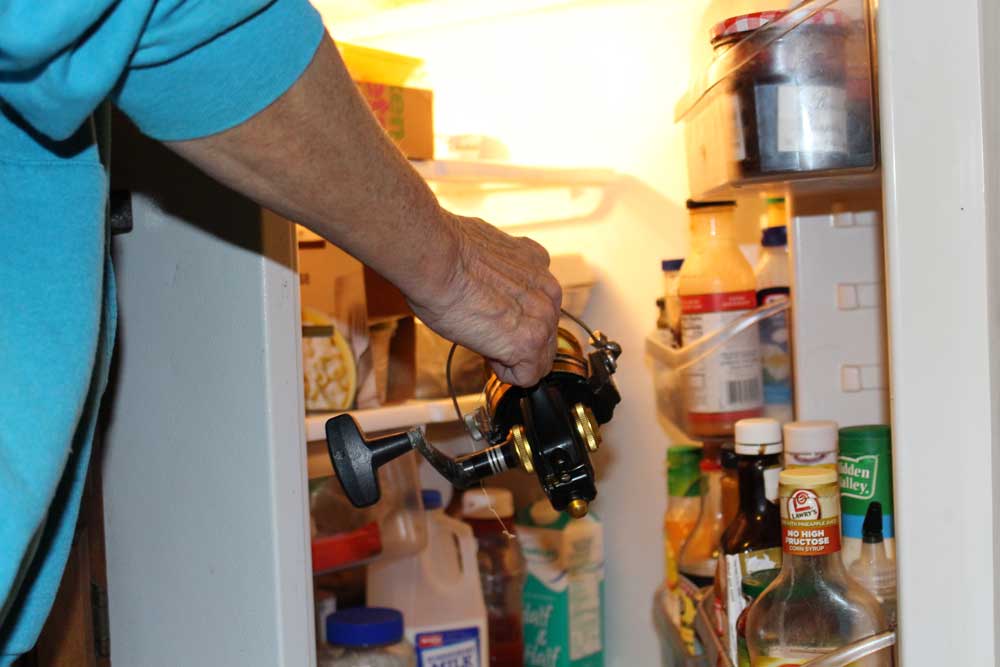Have you ever spooled up a reel with braid, and then become flummoxed when it spun freely around the spool? Yep, it’s happened to us too. So like most folks, we figured the braid had been put on too loose. We stripped the spool, and re-spooled it under more tension. And it seemed to work fine – until it didn’t. The usual solution? Tie 10 or 20 feet of mono to the braid, and reel that onto the spool first. Well fellow anglers, we have some very interesting technical information to share with you.

This all started when FishTalk reader Walt Tomczykowski bought and spooled a pair of new reels early this past winter. Everything seemed honkey-dory, until on a chilly December afternoon Walt discovered that the drags on both reels had somehow mysteriously failed. Further investigation showed that it wasn’t a drag issue, but the braid line was spinning freely around the spool.
Most of us would have simple re-spooled with a longer mono backing. But not Walt. Oh no, he just couldn’t be satisfied. Being a reliability and quality engineer in addition to being a fish-head, Walt started thinking about the problem on a technical level that most of us strive to avoid.
“In the comfort of my kitchen everything worked fine,” Walt explains. “After a long drive to fish at a favorite fishing spot, in the 40-degree temperatures it did not. But back at home, it worked again.”
Tomczykowski began applying a barrage of tests. In one, he placed the reel into his refrigerator to simulate a chilly outdoor temperature – and that’s when the problem arose again. He taped a thermocouple (a sensor that measures temperature) to the spool, and when it hit 50 degree, the reel started to work once more. The experiment was repeated with no line and with all mono, and the reel worked perfectly fine in all temperatures from 32 degrees to room temperature. Finally, with some mono backing (enough for a couple of layers around the spool) the experiment was performed one more time and the reel works in both the cold and at room temperature, too.
“Isolating the issue to the spool and use of braid, I realized the lightweight aluminum spool was contracting with the temperature change,” Walt explains. “I didn’t think about the new slick spectra braid not contracting. I ran calculations on my spool in question, with a length of 0.625" and a radius of 0.5", determined the surface area of the spool, and applied the coefficient of thermal contraction for aluminum and a delta T of 34 F.” (Editor’s note: huh???)
“The change in area was 0.001749 inch square, or in other words approximately 1.8 mils or a couple thousandths of an inch.”
Thank you, Walt (does anyone have an Advil?) We further note that Spectra maker Jerry Brown recommends: "Spool the first full layer of Spectra onto the spool in a close side-by-side fashion under tension of six to eight pounds of pressure over the tag end,” to eliminate this issue. But Walt goes on to note, “To account for variance, or to minimize the risk of human variability or improper spooling (as noted in your staff's Five Tips for Winter Tackle Maintenance article), if the spool does not have a braid-ready rubber ring, adding tape or a layer of mono easily makes up for any shrinkage that may occur.”
Finally, Walt notes that you can test before you cast, by simply putting your new reels into the refrigerator for about 10 minutes. His wife has no comment.